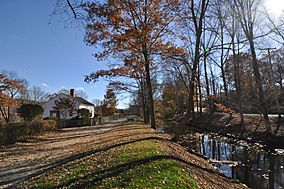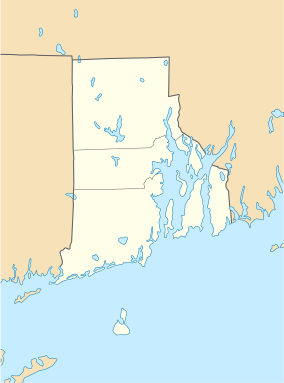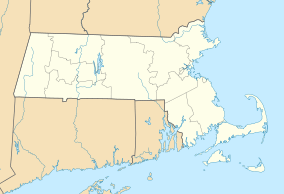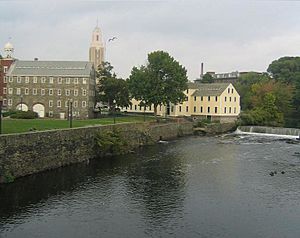Blackstone River Valley National Historical Park facts for kids
Quick facts for kids Blackstone River Valley National Historical Park |
|
|---|---|

Blackstone Canal
|
|
| Location | Providence County, Rhode Island/Worcester County, Massachusetts, United States |
| Nearest city | Pawtucket, Rhode Island |
| Created | December 19, 2014 |
| Governing body | National Park Service, State, Private |
| Website | Blackstone River Valley National Historical Park |
The Blackstone River Valley National Historical Park is a special place managed by the National Park Service. It stretches across parts of Rhode Island and Massachusetts. This park was created to protect and share the amazing story of how the Blackstone River Valley helped start the Industrial Revolution in America.
This area was home to some of the very first successful textile mills in the United States. These mills were super important for early American industry. Later, the Blackstone Canal was built. This canal helped keep the region's factories strong and busy.
The park officially became a national park on December 19, 2014. President Barack Obama signed the law that created it. The park is connected to the Blackstone River Valley National Heritage Corridor. However, the National Historical Park only includes some of the important historical sites from that larger area.
Why is the Blackstone Valley Important?
The Blackstone River Valley is famous for its role in American industry. It all started with a man named Samuel Slater. He was an English industrialist. In 1793, Slater built his first textile mill in Pawtucket, right along the Blackstone River.
Slater brought new technology from England that had never been used in American mills before. He also had a smart way of managing his factory. This helped his business become very successful. He even built other factories and whole towns, like the village of Slatersville.
The textile industry grew quickly in the Blackstone region. Many mill towns popped up. By the late 1820s, the industry was so big that better ways to move goods were needed. This led to the building of the Blackstone Canal. The canal connected Worcester, Massachusetts, to the port city of Providence, Rhode Island. These advancements were a huge part of America's industrial history.
In 1986, the U.S. Congress recognized how important this history was. They created the Blackstone River Valley National Heritage Corridor. This was a partnership to help preserve the area and encourage tourism. Later, the National Park Service studied the region. They recommended creating a National Historical Park. This park was then officially established in 2014.
What Can You See at the Park?
The Blackstone River Valley National Historical Park includes several important historical sites. Each site tells a part of the region's story:
- Blackstone River State Park, Rhode Island: This park is next to both the Blackstone River and the Blackstone Canal. It has paths for biking and walking. You can also access the river here. The Wilbur Kelly Museum is also in this park. It shares the history of transportation in the region.
- Ashton Historic District, Rhode Island: This historic mill village was built in 1867. It was part of the Lonsdale Company's expansion. It grew from an earlier mill owned by Wilbur Kelly.
- Slater Mill National Historic Landmark District, Rhode Island: Built in 1793, the Slater Mill is one of the oldest successful textile mills in the U.S. It played a key role in the area's industrial growth. The entire mill complex is a National Historic Landmark.
- Slatersville Historic District, Rhode Island: This area includes the Slatersville Mill and the town built by Samuel Slater. He created this company town after his success at the first Slater Mill. This district is listed on the National Register of Historic Places.
- Whitinsville Historic District, Massachusetts: This district is centered around a brick mill building from 1826. It is also listed on the National Register of Historic Places.
- Hopedale Village Historic District, Massachusetts: This district features a historic 19th-century mill complex. It is listed on the National Register of Historic Places.
- The Blackstone River itself, along with its smaller rivers and the Blackstone Canal. These waterways were essential for the mills and transportation.





